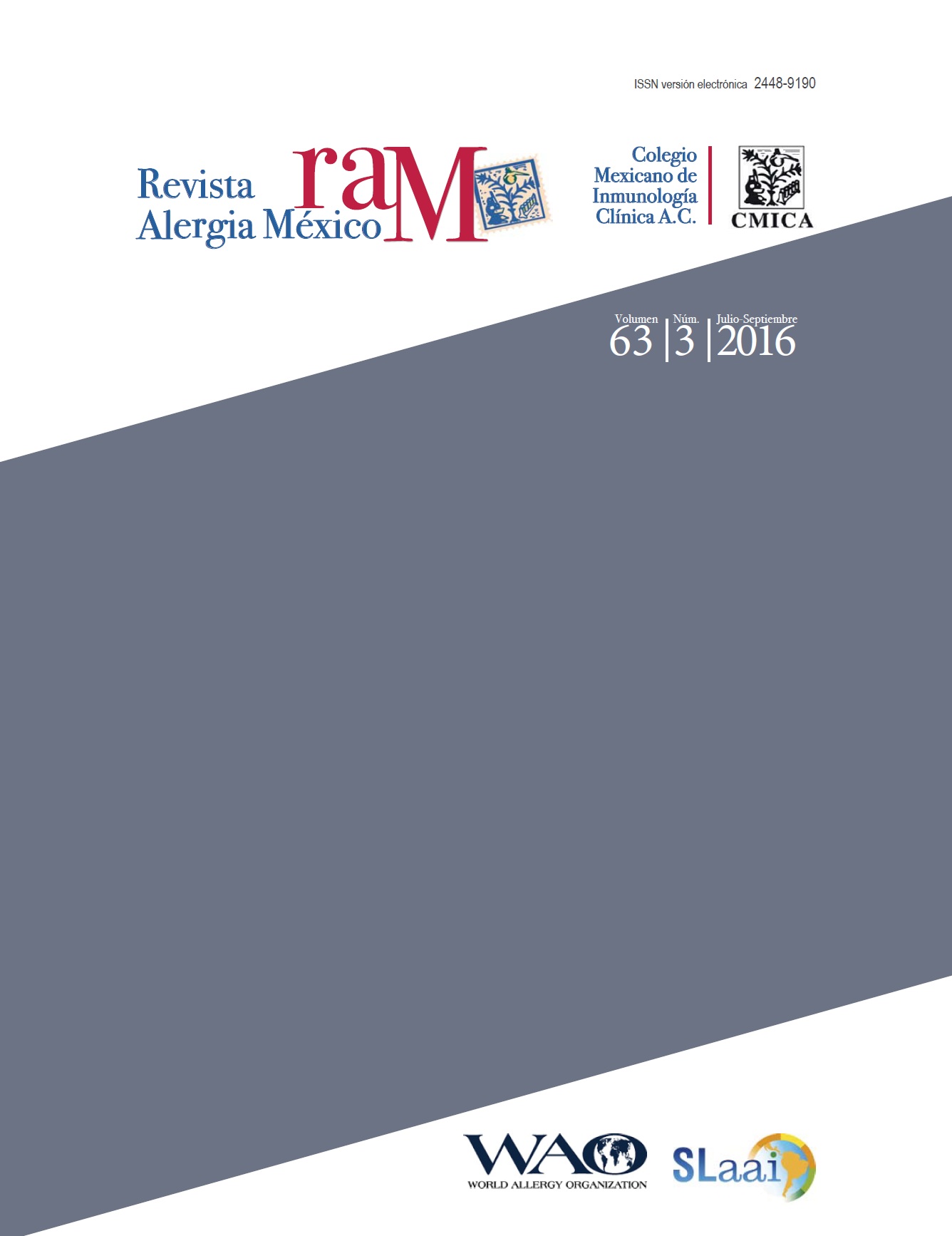Abstract
Background: Atopic dermatitis is observed in up to 20% of children, hence the importance of tools to support its evaluation.
Objective: To determine the validity and reliability of the Spanish adaptation of the IDQOL questionnaire in patients <4 years of age with atopic dermatitis (AD).
Methods: Translation and back-translation of the questionnaire; a pilot test was done in 30 children with AD to arrive at a final version. Internal reliability (Cronbach’s alpha) and correlation of IDQOL and SCORAD scores (Pearson correlation coefficient) were measured.
Results: 102 children aged between two and 48 months were included. The Pearson correlation coefficient (r) of IDQOL and SCORAD scores was 0.697 (p = 0.0001), indicating a high positive correlation. The correlation between the severity measured by the caregiver and the SCORAD score (r = 0.565, p = 0.0001) proved to be low positive. The internal consistency of IDQOL using Cronbach’s alpha was 0.84, indicating good consistency of the instrument for assessing quality of life.
Conclusion: The IDQOL questionnaire in Spanish is a valid measure of quality of life in patients < 4 years with AD and is useful in monitoring and in clinical trials.
References
Ellis C, Luger T, Abeck D, Allen R, Graham-Brown RA, De Prost Y, et al. International Consensus Conference on Atopic Dermatitis II (ICCAD II): clinical update and current treatment strategies. Br J Dermatol. 2003;148 Suppl 63:3-10.
DaVeiga SP. Epidemiology of atopic dermatitis: a review. Allergy Asthma Proc. 2012;33(3):227-234. doi: 10.2500/aap.2012.33.3569.
Shaw TE, Currie GP, Koudelka CW, Simpson EL. Eczema prevalence in the United States: Data from the 2003 National Survey of Children’s Health. J Invest Dermatol. 2011;131(1):67-73. doi: 10.1038/jid.2010.251.
Bieber T. Atopic dermatitis. New England J Med 2008; 358:1483-1494. doi: 10.5021/ad.2010.22.2.125
Garnacho-Saucedo G, Salido-Vallejo R, Moreno-Giménez JC. Actualización en dermatitis atópica. Propuesta de algoritmo de actuación. Actas Dermosifiliogr. 2013;104(1):4-16. doi: 10.1016/j.ad.2011.12.008
Wen HJ, Chen PC, Chiang TL, Lin SJ, Chuang YL, Guo YL. Predicting risk for early infantile atopic dermatitis by hereditary and environmental factors. Br J Dermatol. 2009;161:1166-1172. doi: 10.1111/j.1365-2133.2009.09412.x
Álvarez GK, Delgado CA, Naranjo FJA, Pérez MM, Valdés del Pino AM. Dermatitis atópica en un infante. MEDISAN 2014;18(1):120-126.
Eichenfield LF, Tom WL, Chamlin SL, Feldman SR, Hanifin JM, Simpson EL, et al. Guidelines of care for the management of atopic dermatitis. J Am Acad Dermatol, 2014;70(2):338-348. doi: 10.1016/j.jaad.2013.10.010
Civelek E, Sahiner UM, Yüksel H, Boz AB, Orhan F, Uner A, et al. Prevalence, burden, and risk factors of atopic eczema in school children aged 10-11 years: A national multicenter study. J Invest Allergol Clin Immunol. 2011;21:270-277.
Al Shobaili HA. The impact of childhood atopic dermatitis on the patients’ family. Pediatr Dermatol. 2010;27(6):618-623. doi: 10.1111/j.1525-1470.2010.01215.x.
Sánchez-Pérez J, Daudén-Tello E, Mora AM, Lara Surinyac N. Impact of atopic dermatitis on health-related quality of life in Spanish children and adults: the PSEDA study. Actas Dermosifiliogr. 2013;104(1):44-52. doi: 10.1016/j.ad.2012.03.008
Conde-Taboada A, González-Barcala FJ, Toribio J. Dermatitis atópica infantil: revisión y actualización. Actas Dermosifiliogr. 2008;99:690-700.
Basra MK, Gada V, Ungaro S, Finlay AY, Salek SM. Infants’ Dermatitis Quality of Life Index: a decade of experience of validation and clinical application. Br J Dermatol. 2013;169(4):760-768. doi: 10.1111/bjd.12563
Wild D, Grove A, Martin M, Eremenco S, McElroy S, Verjee-Lorenz A, et al. Principles of Good Practice for the Translation and Cultural Adaptation Process for Patient-Reported Outcomes (PRO) Measures: Report of the ISPOR Task Force for Translation and Cultural Adaptation. Value Health. 2005;8(2):94-104. doi: 10.1111/j.1524-4733.2005.04054.x

This work is licensed under a Creative Commons Attribution-NonCommercial 4.0 International License.
Copyright (c) 2016 Revista Alergia México

